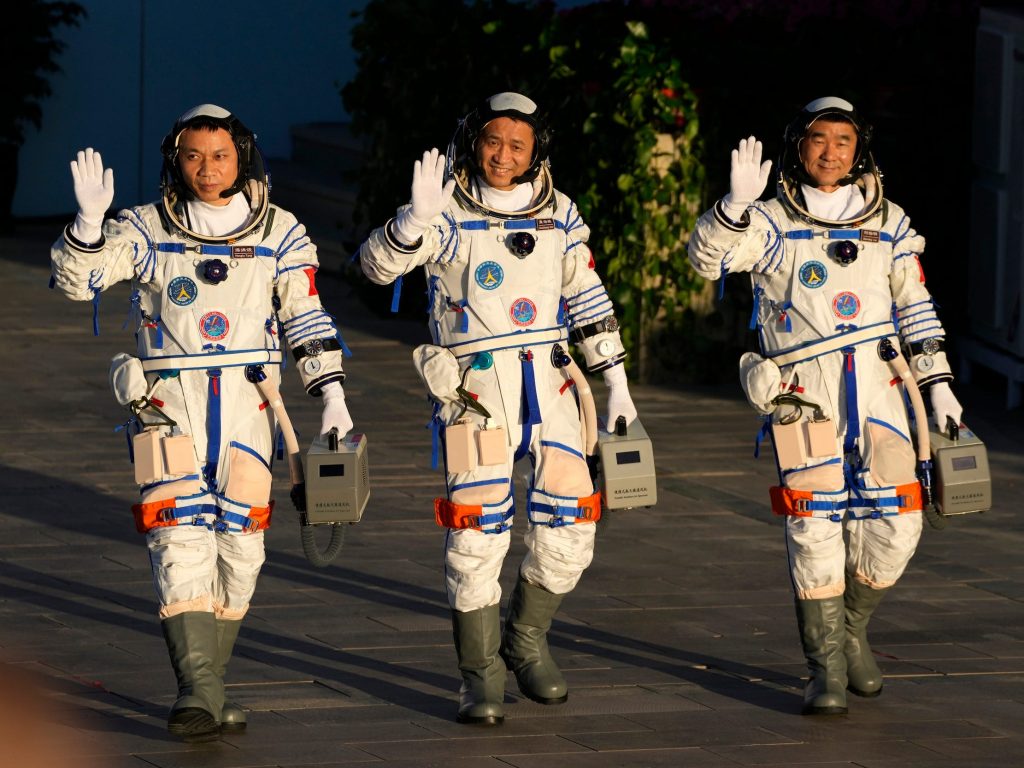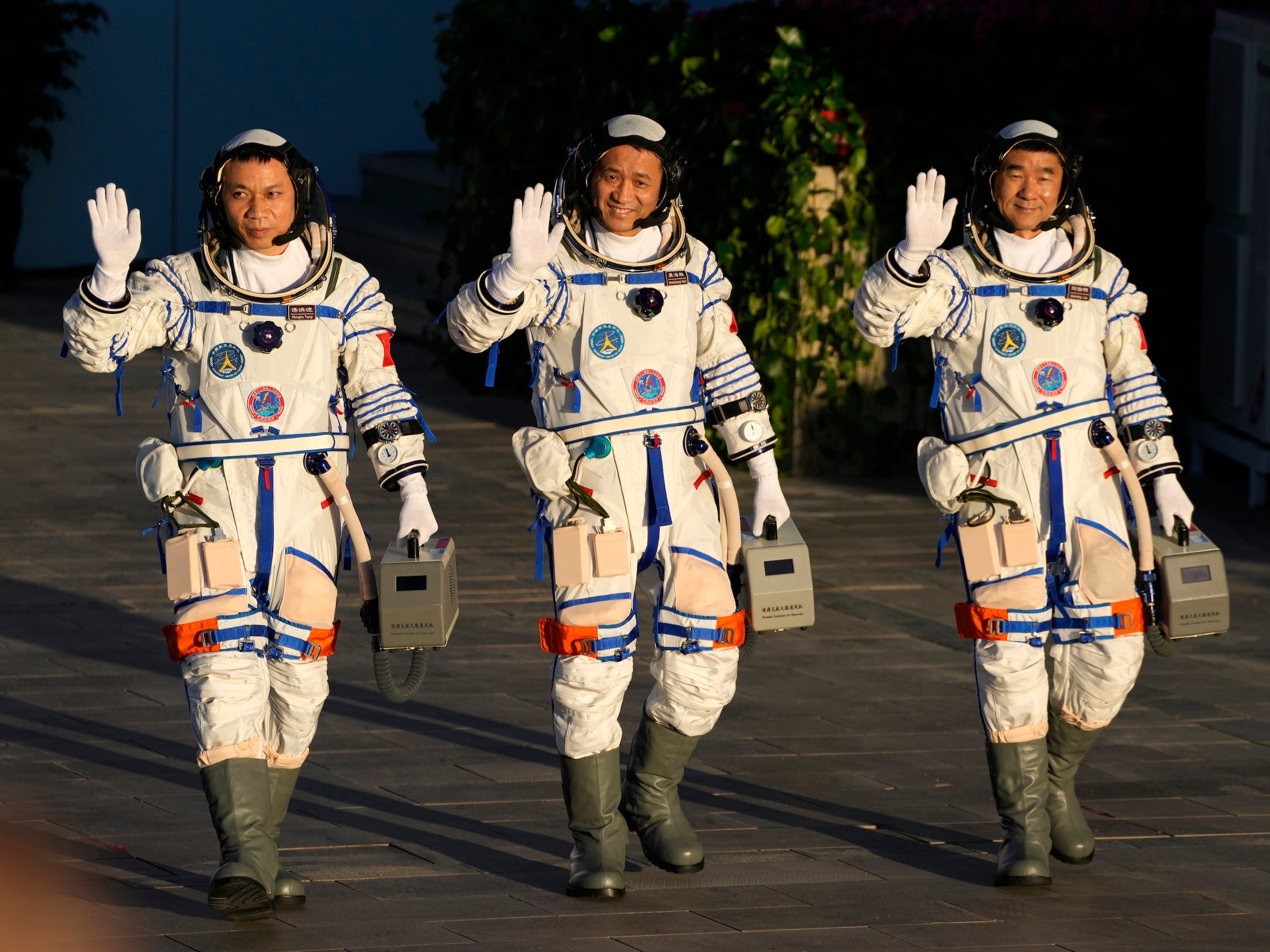
Ng Han Guan/AP Images
- Three astronauts, or taikonauts, landed in Mongolia after three months on China's new space station.
- The Shenzhou-12 crew has now completed the longest spaceflight in Chinese history.
- China aims to launch another taikonaut crew in October, in a bid to finish its space station in 2022.
- See more stories on Insider's business page.
China has successfully flown astronauts to and from its new space station for the first time.
Astronauts Nie Haisheng, Liu Boming, and Tang Hongbo – or taikonauts, as China calls them – returned from a three-month stay on the country's new Earth-orbiting station on Friday.
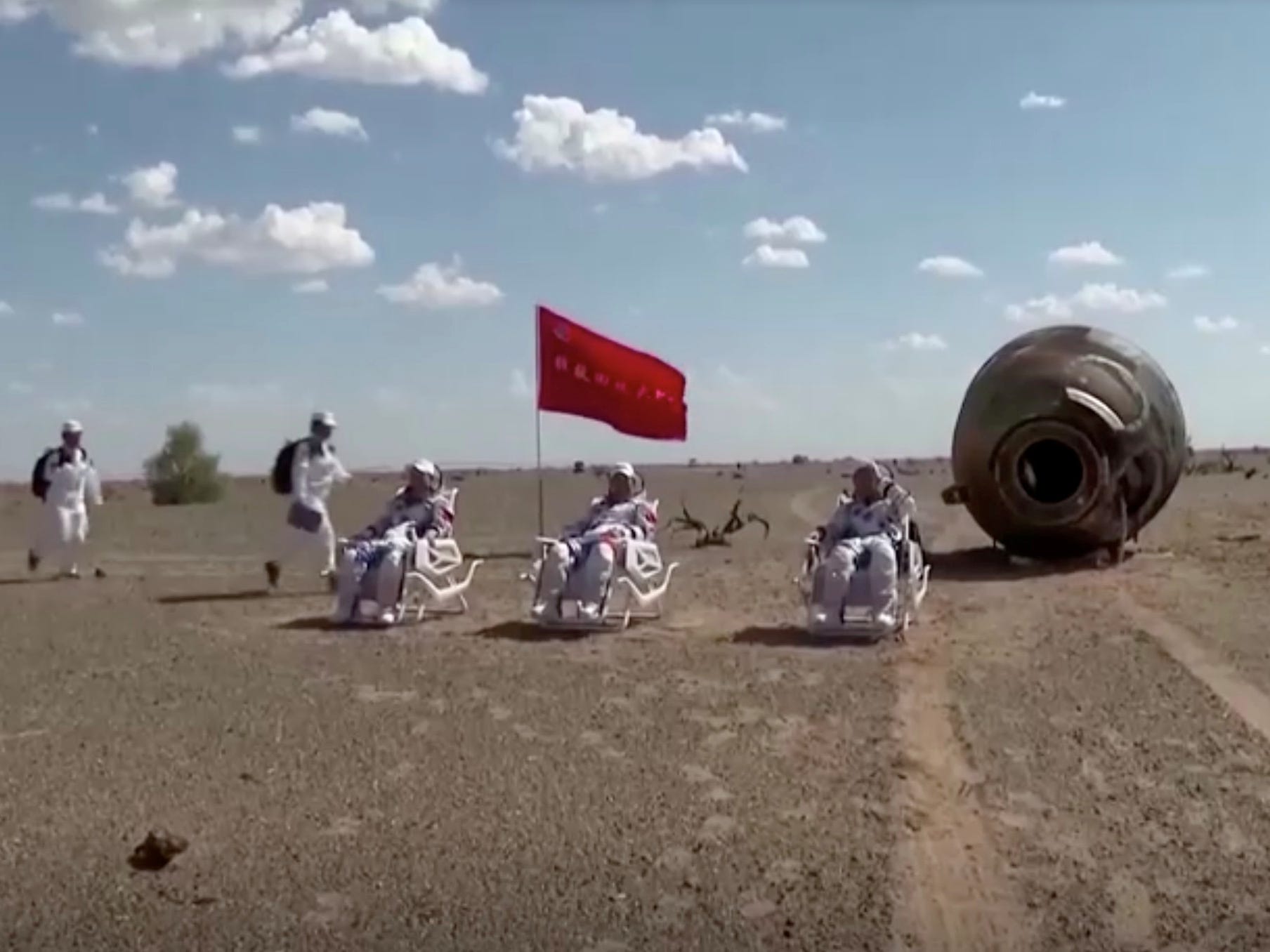
Reuters TV/China Central Television (CCTV)
"The universe is so vast, beautiful and fascinating. I was fortunate and happy to have the chance to fly up into the sky again and take a spacewalk on our own space station," Boming said after landing, according to SpaceNews.
Right now, that station is a single 54-foot-long module containing living quarters for astronauts. China launched that core module, called Tianhe, in April. Ultimately, the country aims to build a 66-ton Chinese Space Station (CSS) which it calls Tiangong.
That's significantly smaller than the International Space Station (ISS), which weighs about 450 tons and is roughly the length of a football field. US lawmakers have barred Chinese astronauts from the ISS since 2011. However, the ISS is aging and may be out of commission by the 2030s.
Once the CSS is complete, China plans to send taikonauts there for six-month stints, much like missions to the ISS. It expects to accept other countries' astronauts on the CSS as well. Dmitry Rogozin, director of Roscosmos, told reporters in June that Russia plans to send its own cosmonauts there.
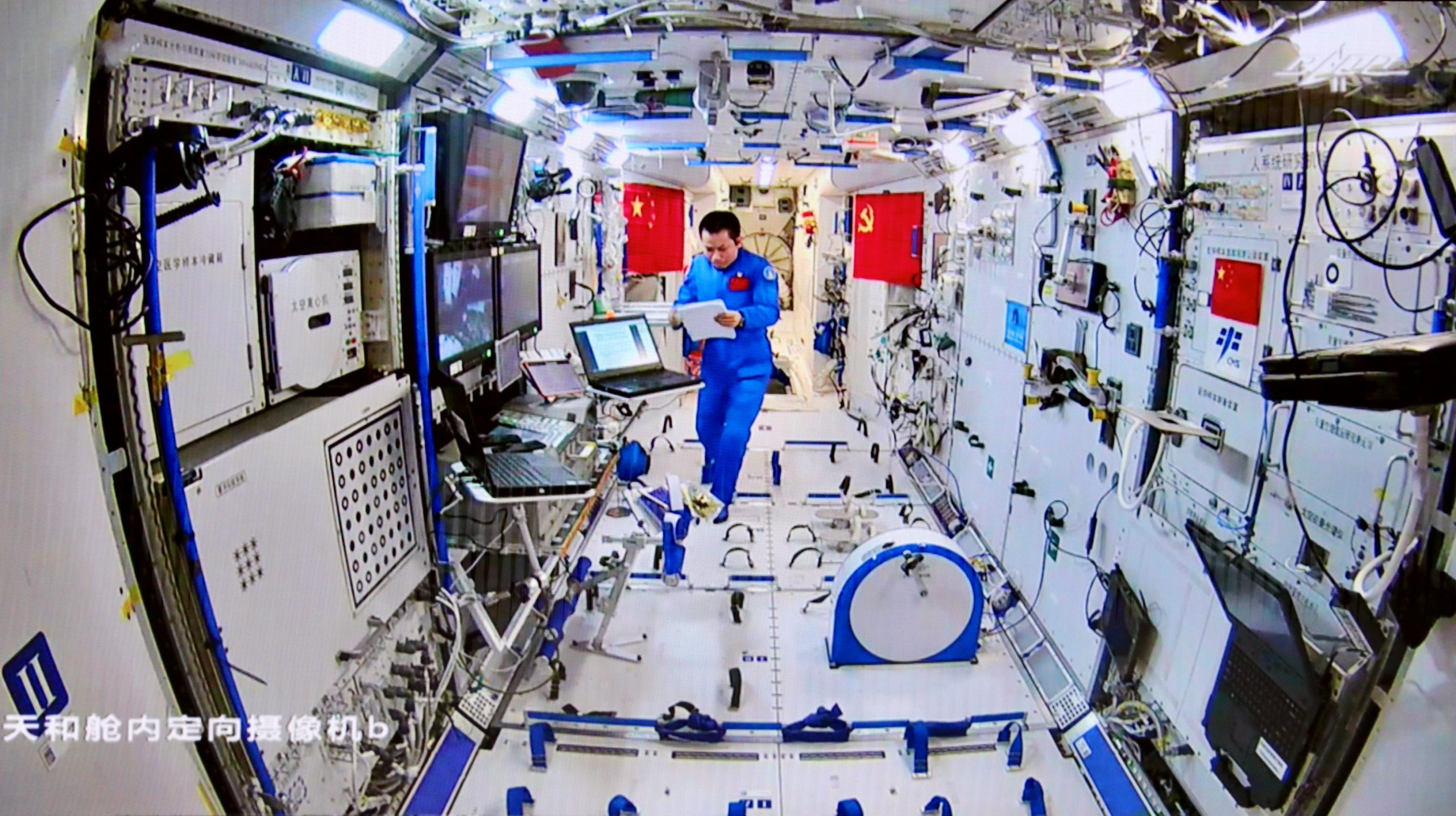
China Manned Space Engineering Office/cnsphoto/Reuters
China launched a cargo mission to the Tianhe module in May, proving that it could dock a spaceship to its new station. The taikonaut crew followed, launching aboard a Long March 25 rocket on June 17 for a mission called Shenzhou-12.
In orbit above Earth, Haisheng, Boming, and Hongbo tested out the Tianhe module's life-support capabilities - its oxygen generation, its ability to filter out the carbon dioxide they exhale, its protections against the radiation of space, and the way it circulates fluids. They also conducted science experiments and carried out spacewalks to install new equipment on the Tianhe module.
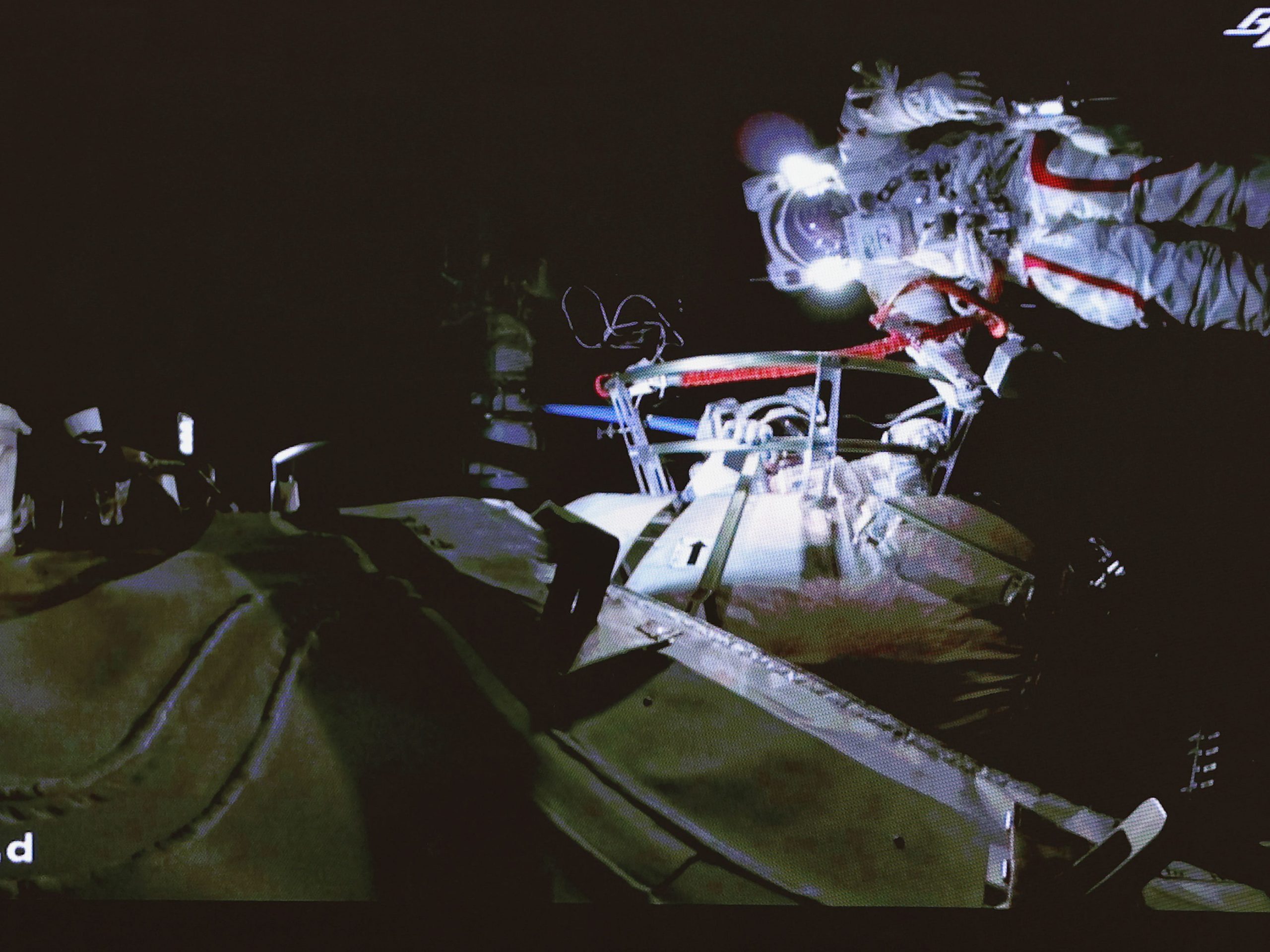
Jin Liwang/Xinhua via AP
On Friday the three taikonauts climbed back inside their spaceship and undocked it from the Tianhe module. The spaceship then fired its thrusters to push itself back towards Earth, initiating a high-speed plummet through the atmosphere. The capsule released an enormous parachute as it neared the ground and drifted to a landing in the Mongolian desert.
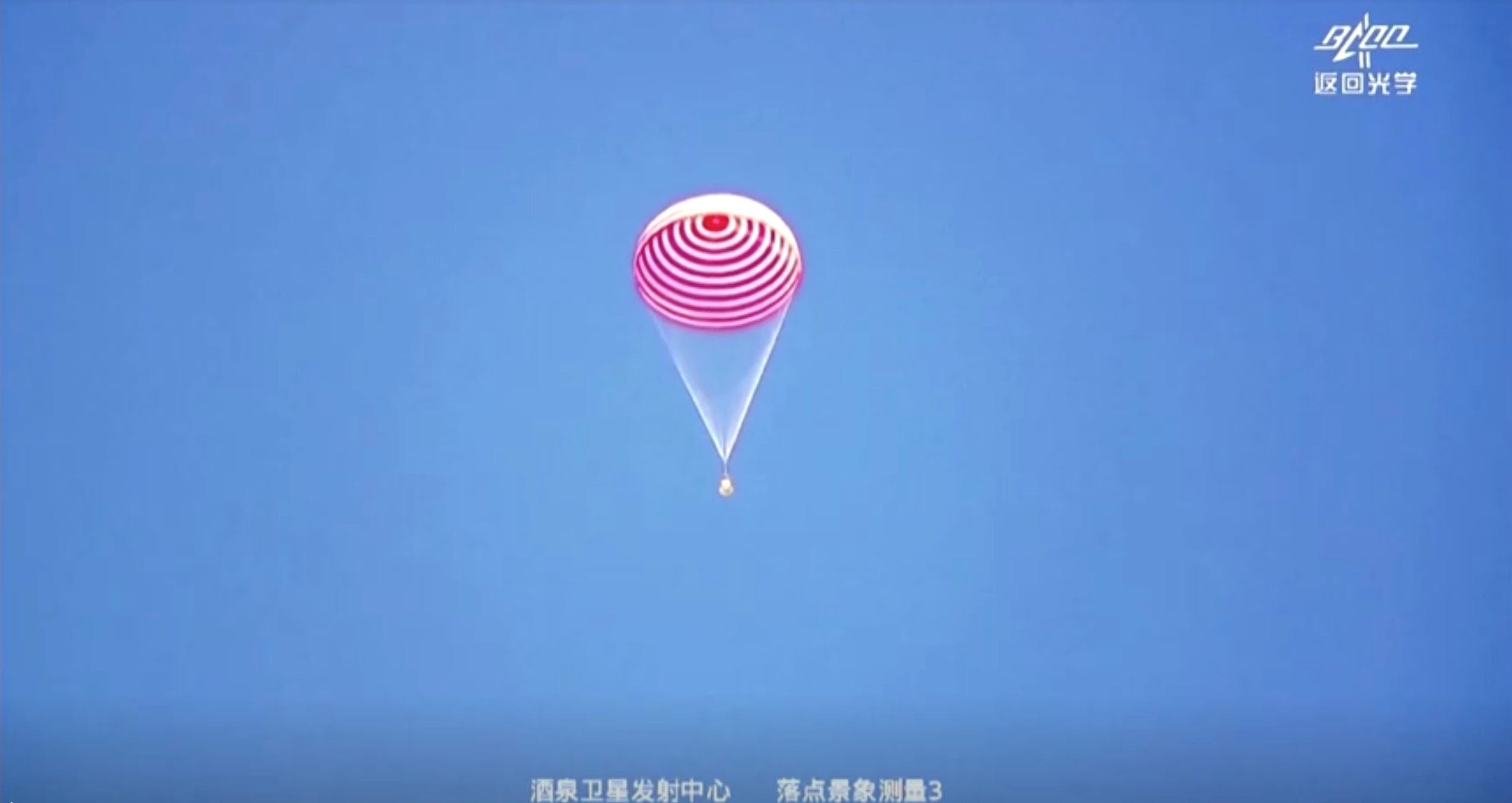
Reuters TV/China Central Television (CCTV)
The Shenzhou-12 crew has now completed the longest spaceflight in Chinese history, nearly tripling the previous record.
"I believe with the continuous development of China's comprehensive strength and national science and technology level, there will be more astronauts setting new records and pushing China's space work to a new height," said Haisheng, who commanded the mission, according to SpaceNews.
China is preparing to launch its next cargo mission to the CSS on Monday, and it aims to send another astronaut crew to the Tianhe module in October, according to the South China Morning Post.
8 more launches to finish China's space station
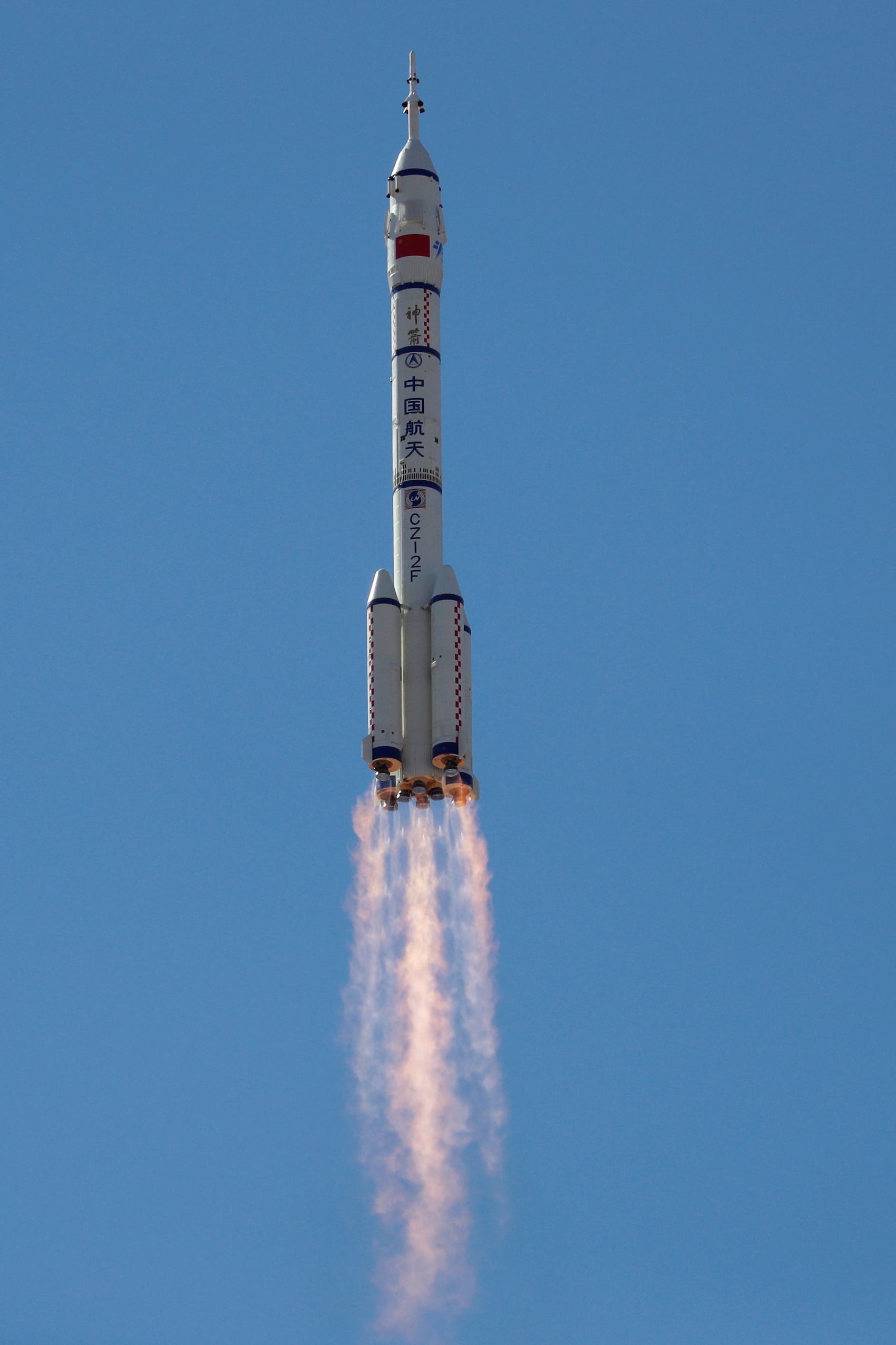
Carlos Garcia Rawlins/Reuters
The last time China flew humans to space was in 2016, when it launched three taikonauts to a temporary space-station prototype, called Tiangong-2. They stayed there for a month. In 2019, the test station fell back towards Earth and burned up in the atmosphere, as planned.
But now the country is launching a flurry of rockets with supplies and people to finish its new space station by the end of 2022.
All in all, China plans to launch eight more missions to complete the CSS. That involves launching two more modules, three more cargo shipments, and three more taikonaut crews - including the cargo shipment set for Monday and the October taikonaut launch.
Future module launches could bring problems, though. After the Tianhe module launched, the body of the Long March 5b rocket that carried it fell into an uncontrolled orbit around Earth. Usually, rocket bodies are programmed to fall into the ocean, but the Long March 5b booster could have landed anywhere across a vast swath of the planet - including much of the inhabited world.
The rocket body still landed in the ocean. But the incident sparked international outcry and criticism from rocket experts. It's unclear whether China will alter its rocket design for the next two module launches. The astronaut and cargo missions, however, will use different rockets that China has previously launched without incident.

